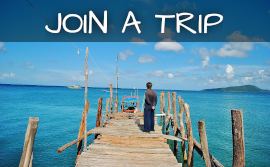Trip to Macao 2006
All travel reports are translated electronically although minor improvements are sometimes made.
Trip to Macao 2006
The course of the trip around Macao – Macao (peninsula) – Taipa
Arrival to Macao
After arriving by boat to the place we got another exotic stamp and we were in Macao. They allowed us three months to stay here and from then on we could enjoy the new stage of our trip. Portuguese colonization has left a visible trace here and therefore is a completely different architecture here than in HK. In Macao there are a lot of small Portuguese-style buildings and very few skyscrapers (compared to the previously visited HK) and that is why all the signs and names of streets and shops were just in that language. Macao is smaller than Hong Kong, and anywhere we wanted to get it took us a few moments.
From the port we took the city bus and after 10 minutes we reached the center of Senado Square. It is the heart of the city abounding in Portuguese architecture and very close to the ruins of the cathedral. Paul. You could feel like we were in Lisbon rather than in China. Not only the building was Portuguese. Also the names of the streets and the square itself, many catholic churches, the city hall and the senate. Everything was in good condition and everything had a very Portuguese character. Even the advertisements on the street were in Chinese and Portuguese, although Portuguese descendants in Macao only make up 2% of the population.

My lovely model poses in front of St. Paul’s Cathedral in Macao.
My very low end hotel in Macau
As for my accommodation in Macao, I followed the advice of a Frenchman. He said that while here I should spend at least one night in a very specific and cheap hotel in Macao, even for the same experience. The hotel was actually different than all the others. It was a large hall, divided by high dictation, to create rooms. In the middle was a table and one moving bar and a windmill on the roof as there was no ceiling. As I walked down the corridor, I could see the walls were very heavily profiled and tired by the time. There was also a toilet (or rather a hole in the floor) and one shower for the whole hotel. It was a very famous and very specific place in Macao, about which all the guides wrote. Monika checking if she will be able to live there she came across a great cockroach (thumb size) and ran out immediately. But I felt that he would come back to me. As a curiosity I will add that the biggest rats I have seen so far in Malaysia, Kuala Lumpur.They were like small dachshunds. The biggest cockroaches are those from Macao. After some time Monika returned. I think that she also liked the dark, green-painted place, though she never admitted it.
Visiting Macao
The next morning we went for a walk through the colonial, narrow buildings of Portuguese cabins. Strolling down the cobbled street, after a short while we reached the most famous monument in Macao, the ruins of St. Paul’s Cathedral. The church was built in the early seventeenth century and, given the ornate sculpture, is considered by many to be the best sacred building in Asia. Unfortunately, only the front wall has been left until today. In 1835 a fire broke out in the church kitchen. To the ruins I had to climb the stairs and then I walked up the second stairs on the back and only wall of the church. It was a nice experience but there was not much to watch. Anyway it is a very special place and the best one was the walk through the “little Portugal” and the wealth of shops of all kinds. Then we saw nearby Fort Monte and its ramparts with a collection of Portuguese cannons. It was built in the first half of the 17th century by the Jesuits and is today a great place to visit. It is located on a hill, near the ruins of the church of Sts. Paul. From here, you can see the higher buildings of the city, which were definitely not as attractive as those in neighboring Hong Kong.
Macao is simply different. The same fort is also home to the notable Macao Museum, devoted to the history, culture and traditions of the region since its founding. The museum was very interesting and housed a lot of exhibits. It refers to the colonial history of Macao and to the importance of this city as one of the most important commercial ports in the region. Pictures and sketches from those years, as well as sculptures, vessels and front walls of Portuguese houses. These were low bungalows with characteristic round balconies, painted in different colors. I also liked cutouts of paper that looked like intricately carved reliefs in various shapes and colors, though it was just paper. I believe that without seeing this museum should not leave Macao and its location is ideal.

The shot an advert with me in Macao.
I spend the rest of the day looking closely at the peninsular parts of Macao, churches, Portuguese edifices and cobbled, narrow streets with Portuguese names. In the evening we watched beautifully lit casinos, including Casino Lisbon. We went to one of them but only to see them and not play them. The decor was wonderful. I felt like a museum of Chinese art. There were great Chinese vases in various designs, huge sculptures of dragons and Buddha with the use of expensive stones. The whole hotel and casino looked like a great monument of money. The exterior is brighter at night than in day and from inside rich in valuables and magnificent sculptures. We also saw the Macau Tower, 338m high, which is the tenth highest in the world. We also went under the symbol of Macao, a monument representing the golden lotus flower (located on the flag of Macao). We had some rest, I practiced, but unfortunately the guards overtook us as you can see in Macao as in Chinese provinces, you can not trample the grass.
Taipa
The next day we went to Taipa Island where we could spend some time by the sea. We got there very quickly while driving through very long and beautifully profiled, brightly bridges. Taipa was once a great duck farm and boat dock but today it is a place of nice apartments, apartments and a university.Portuguese colonization also left behind baroque churches and other buildings. Taipa is a nice place to spend some time, but most of the historical monuments are located in the peninsula of Macao.
We spent some time at the seaside but could not swim because the beach was so polluted here. So I ate some kebabs from octopus and then we got something most unexpected. The filmmakers have recorded with me and Monika mobile advertising. We could not believe it! It happens sometimes that people stealthily take pictures and record us. For example, even before the Shao Lin monastery, we even had a photo session because everyone wanted to have us in the photo but the ad had us the first time. All we had to do was go with a big smile on the coast and talk to the phone in a very cheerful, carefree manner. Each of us had three shots and it worked out well. Then we said to the camera a few words in Chinese (which was the hardest) but it succeeded and apparently this advertisement is supposed to be in a few months on the Macau TV. We will also be sending emails as the final version looks. We enjoyed ourselves and it was a whole new experience for us. Once again in Macao, people will recognize our faces in the street. I’m kidding though everything is possible.
After our first film we went to an elegant pool. We had a great time there, swimming and relaxing (because of starvation) and ended up eating a fine Portuguese dinner on the seafront. It was beautiful. We sat on the terrace eating sophisticated dishes and had a sea breeze on both sides. The island of Taipa highly recommends as a rest after exhausting sightseeing. Must try grilled octopus.

Grilled octopus in Macao.
On our way back to our charming hotel, we again drove through the long, beautifully lit bridge and once again saw the lavishly lit casino.
It was our last night in a very original hotel and the next day we said goodbye to Macao and headed for the Chinese border. It took maybe 10 minutes, since Macao is just so small. Here our wonderful adventure with “little Portugal” has ended.
Summary of Macao
Most people give priority to Hong Kong and although this choice is justified, I think it would be a great loss to see the nearby Macao. It is a wonderful display of Portuguese colonization at its best. I think everyone will find something for themselves; historic architecture, beaches, warm climate and good cuisine from many parts of the world. Macao is another very successful experience of my trip.

After hard sightseeing of Macao I went to sleep.



































